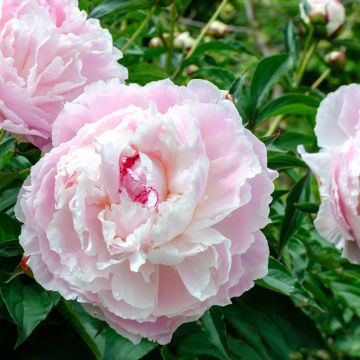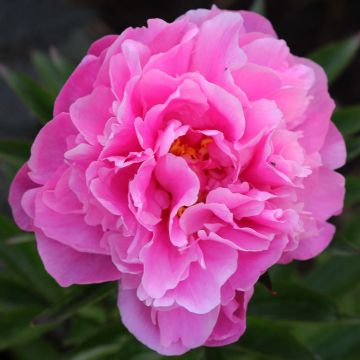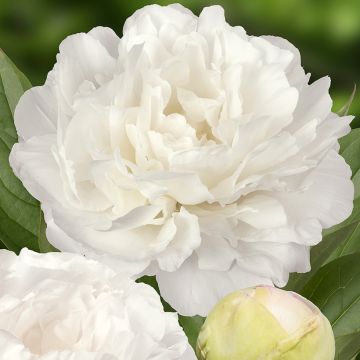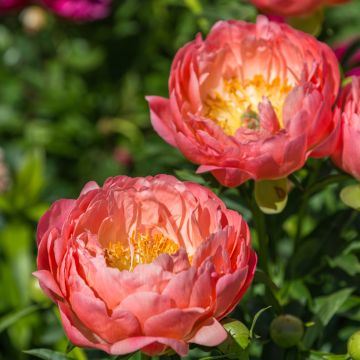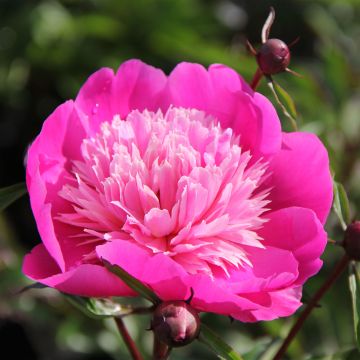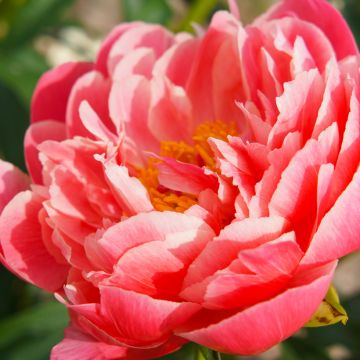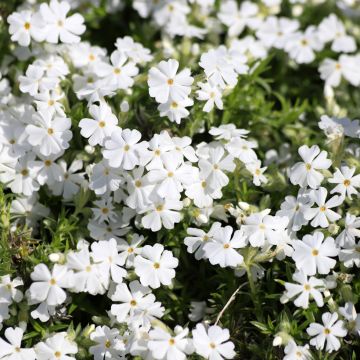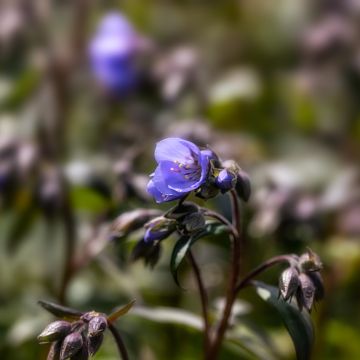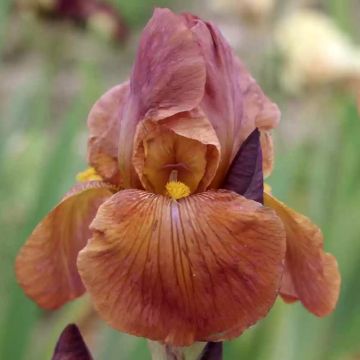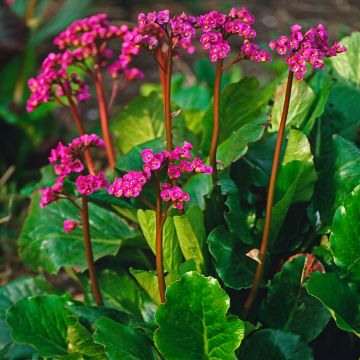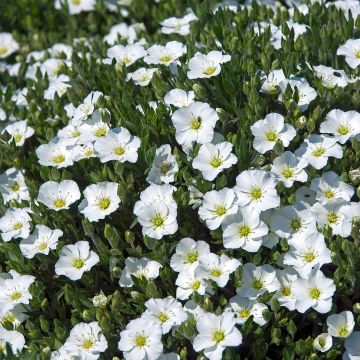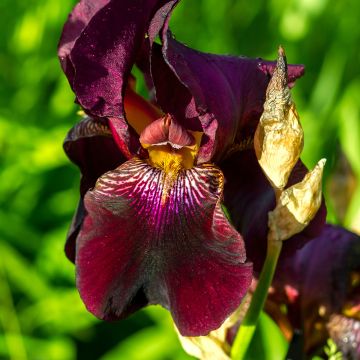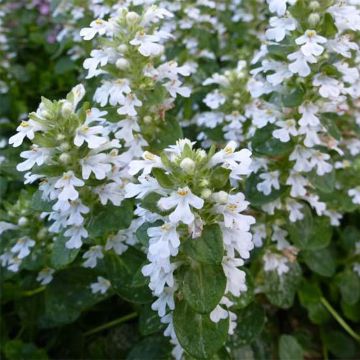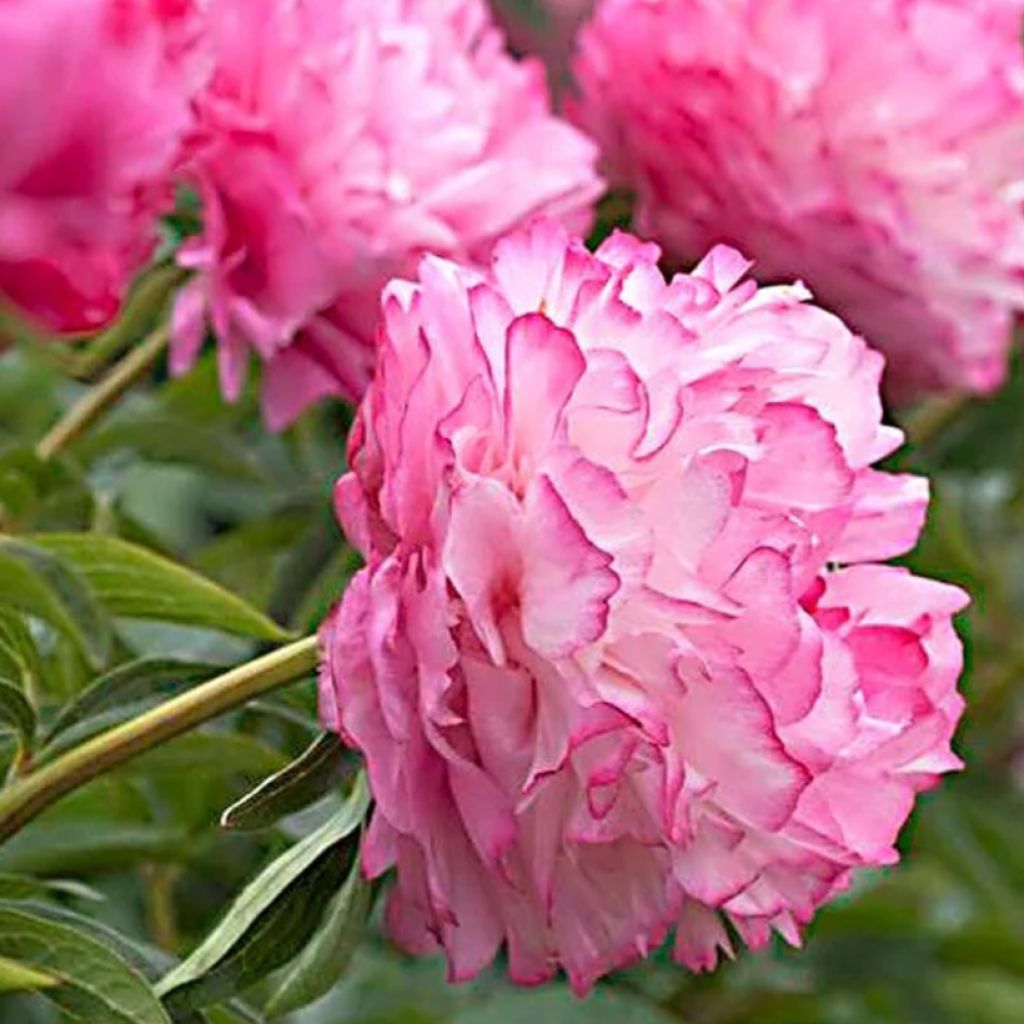

Paeonia x lactiflora Joker - Chinese Peony
Paeonia x lactiflora Joker - Chinese Peony
Paeonia x lactiflora Joker
Chinese peony, Common peony, Garden peony, Herbaceous Peony
This item cannot be shipped to the selected country
Delivery charge from €5.90
Delivery charge from €5.90
More information
Schedule delivery date,
and select date in basket
This plant carries a 12 months recovery warranty
More information
We guarantee the quality of our plants for a full growing cycle, and will replace at our expense any plant that fails to recover under normal climatic and planting conditions.
From €5.90 for pickup delivery and €6.90 for home delivery
Express home delivery from €8.90.
From €5.90 for pickup delivery and €6.90 for home delivery
Express home delivery from €8.90.
Does this plant fit my garden?
Set up your Plantfit profile →
Description
The Paeonia lactiflora 'Joker' is a variety of herbaceous peony obtained in 1963, introduced to the market in 2004, and awarded in the USA in 2021. It is still relatively rare in the horticultural trade. This unique variety produces large double flowers that transition from dark pink to white with delicately fringed pink edges. The plant blooms fairly early in the season and develops sturdy stems that do not require staking. 'Joker' forms beautiful bouquets in shades of pink to white, whether in the garden or in a vase.
The herbaceous and hybrid peonies are mainly derived from Paeonia lactiflora, a perennial plant native to central and eastern Asia (from eastern Tibet and northern China to eastern Siberia), where it naturally grows in woods and meadows. This plant now belongs to the peony family. Its deciduous foliage emerges in spring and disappears in autumn. It grows from a large, fleshy root that does not appreciate being moved.
The Paeonia lactiflora 'Joker' is a cultivar derived from the seeds of Henry Bockstoce (USA), introduced by Landis in 1963, and brought to market in 2004. The plant forms an upright clump. It has a moderate growth rate, reaching a height and width of 76 to 80 cm. Its double flowers measure approximately 15 cm in diameter and are distinguished by their changing colour: they open in dark pink and mature into snow-white with pink speckled edges. The flowering period extends from early to mid-season for peonies, between the beginning and the end of May, depending on the climate. The very strong stems of this peony can support the weight of the large flowers, with each stem bearing one to three flowers. The young foliage unfurls into large, deeply cut, bright green leaves. They are carried on a petiole that divides into 3, with lanceolate or ovate-lanceolate segments. In this variety, the flowers are not scented.
The 'Joker' peony is a robust and versatile perennial that fits perfectly in various landscaping designs. Its graduated colouration during flowering stands out in borders, beds, and floral arrangements. It can easily be paired with robust perennials, annuals, or roses. For example, with white or pink 'David' or 'Rosa Pastel' panicled phlox, the roses 'Variegata di Bologna' or 'Gros Provins panaché'. To lighten the scene, consider adding forget-me-nots.
The peony can also contribute to the flower reserve for bouquets in the vegetable garden. However, growing it in a pot is not recommended as its needs will not be met. Over time, it becomes majestic and blooms more abundantly, producing up to 60 flowers.
Report an error about the product description
Flowering
Foliage
Plant habit
Botanical data
Paeonia
x lactiflora
Joker
Paeoniaceae
Chinese peony, Common peony, Garden peony, Herbaceous Peony
Cultivar or hybrid
Other Herbaceous and hybrid Peonies
Planting and care
The best time to plant 'Joker' peonies is in the autumn. Plant peonies in full sun or in a bright location, spaced 60 cm apart. They appreciate cold winters that promote dormancy and flower formation. The soil should be loose, deep, fertile, and moist. They need space and are susceptible to competition from other species. Prepare a hole 50 cm deep and mix organic fertiliser into your soil, partially fill the hole, place your plants, and cover with 6 cm of soil. After planting, tamp down and water thoroughly.
Our bouquet secret: Cut your peonies at daybreak, when the buds start to colour. Don't delay putting them in water.
Planting period
Intended location
Care
This item has not been reviewed yet - be the first to leave a review about it.
Spring flowering perennials
Haven't found what you were looking for?
Hardiness is the lowest winter temperature a plant can endure without suffering serious damage or even dying. However, hardiness is affected by location (a sheltered area, such as a patio), protection (winter cover) and soil type (hardiness is improved by well-drained soil).

Photo Sharing Terms & Conditions
In order to encourage gardeners to interact and share their experiences, Promesse de fleurs offers various media enabling content to be uploaded onto its Site - in particular via the ‘Photo sharing’ module.
The User agrees to refrain from:
- Posting any content that is illegal, prejudicial, insulting, racist, inciteful to hatred, revisionist, contrary to public decency, that infringes on privacy or on the privacy rights of third parties, in particular the publicity rights of persons and goods, intellectual property rights, or the right to privacy.
- Submitting content on behalf of a third party;
- Impersonate the identity of a third party and/or publish any personal information about a third party;
In general, the User undertakes to refrain from any unethical behaviour.
All Content (in particular text, comments, files, images, photos, videos, creative works, etc.), which may be subject to property or intellectual property rights, image or other private rights, shall remain the property of the User, subject to the limited rights granted by the terms of the licence granted by Promesse de fleurs as stated below. Users are at liberty to publish or not to publish such Content on the Site, notably via the ‘Photo Sharing’ facility, and accept that this Content shall be made public and freely accessible, notably on the Internet.
Users further acknowledge, undertake to have ,and guarantee that they hold all necessary rights and permissions to publish such material on the Site, in particular with regard to the legislation in force pertaining to any privacy, property, intellectual property, image, or contractual rights, or rights of any other nature. By publishing such Content on the Site, Users acknowledge accepting full liability as publishers of the Content within the meaning of the law, and grant Promesse de fleurs, free of charge, an inclusive, worldwide licence for the said Content for the entire duration of its publication, including all reproduction, representation, up/downloading, displaying, performing, transmission, and storage rights.
Users also grant permission for their name to be linked to the Content and accept that this link may not always be made available.
By engaging in posting material, Users consent to their Content becoming automatically accessible on the Internet, in particular on other sites and/or blogs and/or web pages of the Promesse de fleurs site, including in particular social pages and the Promesse de fleurs catalogue.
Users may secure the removal of entrusted content free of charge by issuing a simple request via our contact form.
The flowering period indicated on our website applies to countries and regions located in USDA zone 8 (France, the United Kingdom, Ireland, the Netherlands, etc.)
It will vary according to where you live:
- In zones 9 to 10 (Italy, Spain, Greece, etc.), flowering will occur about 2 to 4 weeks earlier.
- In zones 6 to 7 (Germany, Poland, Slovenia, and lower mountainous regions), flowering will be delayed by 2 to 3 weeks.
- In zone 5 (Central Europe, Scandinavia), blooming will be delayed by 3 to 5 weeks.
In temperate climates, pruning of spring-flowering shrubs (forsythia, spireas, etc.) should be done just after flowering.
Pruning of summer-flowering shrubs (Indian Lilac, Perovskia, etc.) can be done in winter or spring.
In cold regions as well as with frost-sensitive plants, avoid pruning too early when severe frosts may still occur.
The planting period indicated on our website applies to countries and regions located in USDA zone 8 (France, United Kingdom, Ireland, Netherlands).
It will vary according to where you live:
- In Mediterranean zones (Marseille, Madrid, Milan, etc.), autumn and winter are the best planting periods.
- In continental zones (Strasbourg, Munich, Vienna, etc.), delay planting by 2 to 3 weeks in spring and bring it forward by 2 to 4 weeks in autumn.
- In mountainous regions (the Alps, Pyrenees, Carpathians, etc.), it is best to plant in late spring (May-June) or late summer (August-September).
The harvesting period indicated on our website applies to countries and regions in USDA zone 8 (France, England, Ireland, the Netherlands).
In colder areas (Scandinavia, Poland, Austria...) fruit and vegetable harvests are likely to be delayed by 3-4 weeks.
In warmer areas (Italy, Spain, Greece, etc.), harvesting will probably take place earlier, depending on weather conditions.
The sowing periods indicated on our website apply to countries and regions within USDA Zone 8 (France, UK, Ireland, Netherlands).
In colder areas (Scandinavia, Poland, Austria...), delay any outdoor sowing by 3-4 weeks, or sow under glass.
In warmer climes (Italy, Spain, Greece, etc.), bring outdoor sowing forward by a few weeks.

































